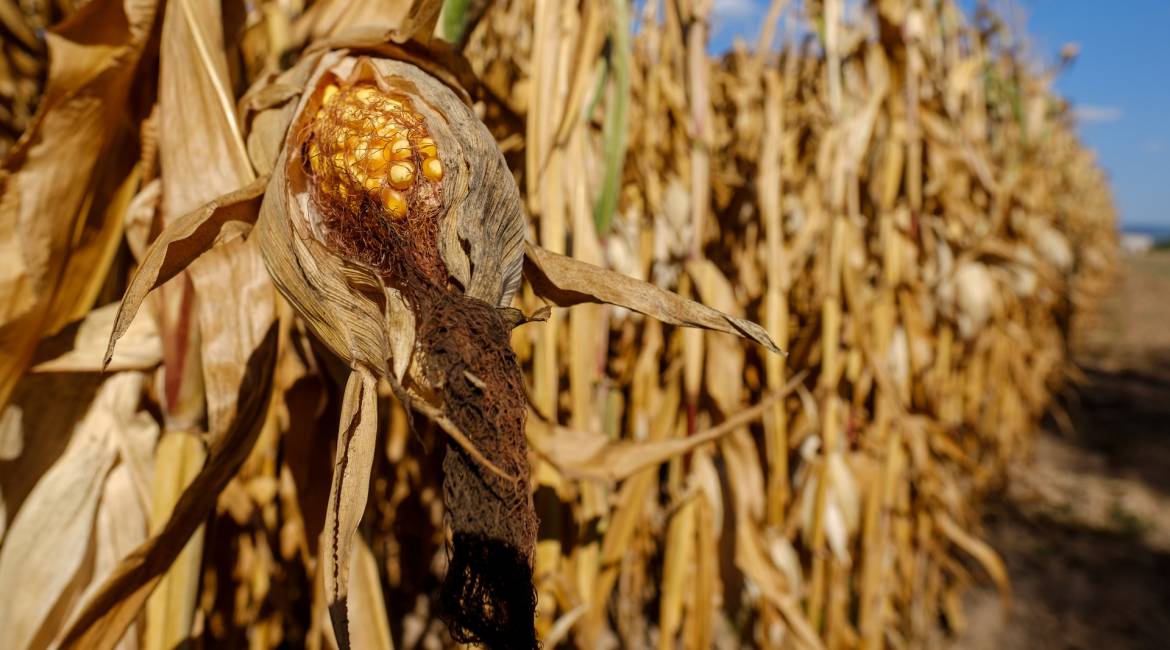Corn - history and myth
Corn, like all cereals was born with man and how easily the story of its birth meets the myth. The domestication of corn occurred around 9,000 years ago but little is known historically, much is told through legends.
Corn has been of crucial importance for all Mesoamerican civilizations. Maya, Incas and Aztecs, all these mysterious civilizations considered corn to be a gift from and to the deities.
In the Mayan tradition the third god in order of importance, after the god of Heaven and the god of rain, was Yam kax, god of corn. He was portrayed as a young man with large, protruding eyes and ears, his head adorned with a corncob. Rituals and offerings to the god of corn were of paramount importance and took place at regular intervals.
The Mayan myth of creation tells of how early humans were modeled from cornmeal.

It was Christopher Columbus who was the first to think of importing corn into Europe: in Italy it arrived in 1530 both in the Veneto region where it was an extraordinary success, then in the Kingdom of Naples and then in the Papal state, where it was called corn, not because it came from the Turkish empire, but because everything that came from the countries that were not Christian was called Turkish!
In the following centuries, corn soon became food for poor people like farmers. Back hen it was not known that the daily consumption of polenta, when not accompanied by other foods, would have caused a disease called pellagra, which created many health problems.
Zea Mays is the scientific name for maize, a cereal belonging to the Graminacee family, which does not contain gluten.
In addition to yellow corn, the most common one in Italy, there are many other types of corn:
- multicolored: the ear is made up of beans of different colors. It derives from a variety of corn grown by Native Americans before single-colored corn took over.
- black: the beans actually have a very dark indigo color. Much appreciated in the East for its sweet taste.
- white: the grains have a glassy, pearly and bright color as they are free of carotenoids.
- red: its very particular color is due to the presence of anthocyanins, pigments that give it important properties.
- blue: variety with a sweet taste and a truly unusual color.
- orange: it was grown by Native Americans. It is a type of high protein corn.
- green: it is a particularly drought-resistant variety.

In Italian cuisine, corn is often eaten in the form of flour with which polenta is prepared. As with the other cereals we also find different degrees of grinding and refining:
- the coarse-ground flour is ideal for polenta.
- the flour has a medium grain, it is suitable for soft polenta, croquettes and crepes. It mixes easily with the finest rice flour to create sweets.
- the flour has a very fine grain and gives compact doughs. It is ideal for batters, shortcrust pastry and soft doughs such as waffles, pancakes and creamy desserts.
Like all cereals, corn also has a mainly energetic nutritional function.
Maize contains several mineral salts such as potassium, sodium, zinc, selenium, manganese, magnesium, phosphorus, calcium, iron and copper and vitamins A, B (B1, B2, B3, B5, B6), E, K and J.

The health benefits of corn are manifold:
- intestine - thanks to the fiber content, corn helps intestinal transit
- heart - does not contain cholesterol
- diabetes - corn has a lower glycemic index than refined pasta and bread
- celiac disease - is gluten-free
- bones and teeth - it is rich in calcium, magnesium and phosphorus
- anemia - contains iron and vitamins useful against anemia
- memory - contains phosphorus and magnesium useful for memory
- skin: thanks to the content of antioxidants such as vitamin A, carotenoids and polyphenols they help the well-being of the skin
With corn polenta I weaned my children and I still remember how they loved it - in both sweet and savoury form.
Although corn polenta is often associated with the image of the winter cold, corn is a refreshing and soothing food and therefore is also good in the summer served cold in the form of a timbale, meatballs or used instead of bread for delicious croutons.
The recipe of the week is ideal for an aperitif or appetizer!
On Sunday we will find out what it will be





